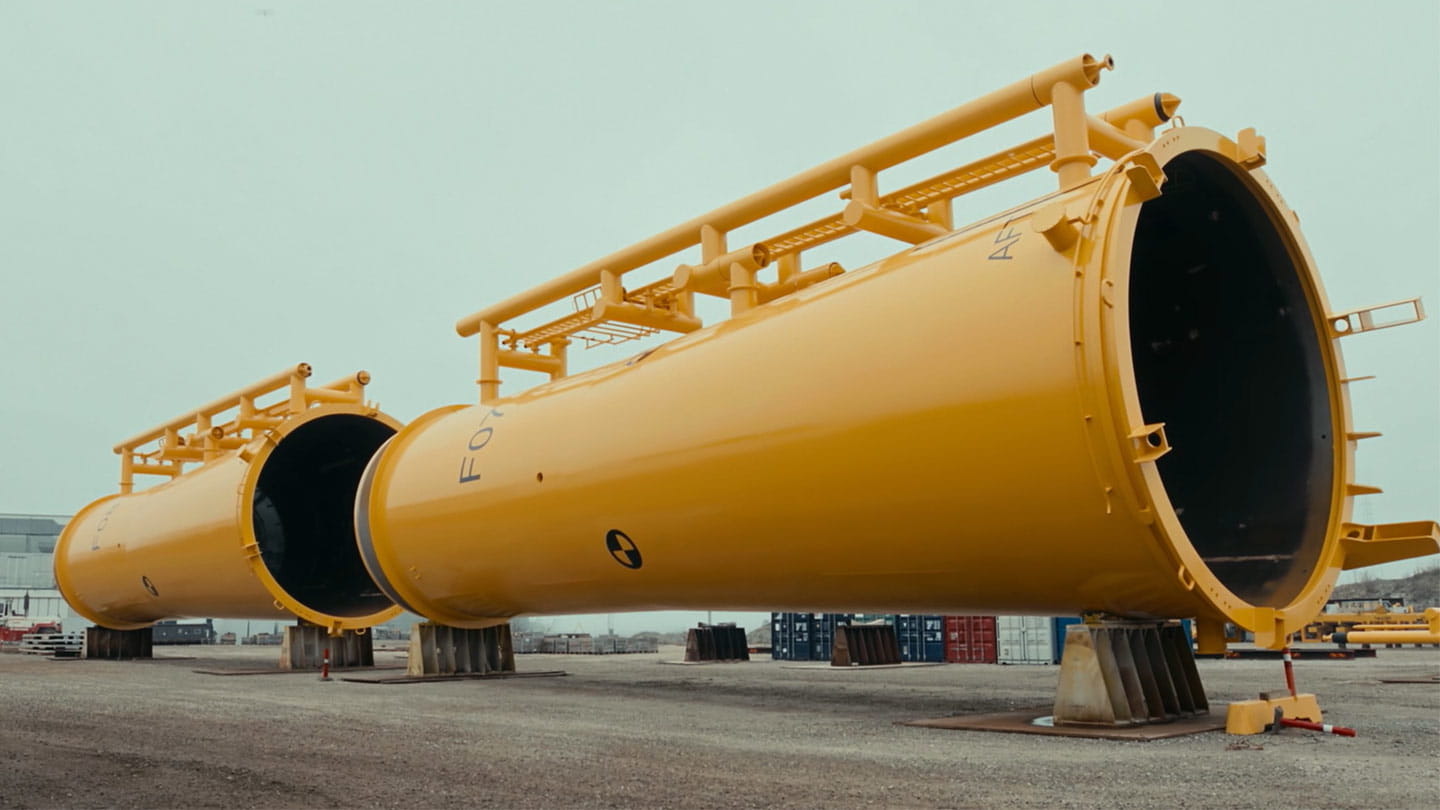Laying the foundations for low-emission steel
02.05.24
Simon Juul Toft, Head of Green Procurement
02.05.24
Simon Juul Toft, Head of Green Procurement
Recently, Ørsted announced a long-term offtake agreement for lower-emission heavy plate steel with our long-standing trusted steel supplier, Dillinger.
That might sound like just another jargon-heavy corporate update – but we believe it’s a transformative step forward for our industry! Here’s why.
Wind power has a 99 % lower carbon footprint than coal. Building more wind farms (and other renewable energy assets) is therefore at the heart of global efforts to reduce emissions in line with the Paris Agreement. We simply must build a lot more offshore wind farms – and at Ørsted, we’re determined to not just build them, but to build them right.
A key aspect of that is to reduce emissions from the manufacturing of wind farm components – which is where steel comes into the picture. Steel is the most emission-intensive material used in the construction of an offshore wind farm: 50 % of the life cycle emissions relate to steel, and a majority of that comes from the heavy plate steel used in wind turbine foundations. Conventional steel production generates 2-2.5 tonnes of greenhouse gas emissions per tonne of steel produced.

The good news is that technologies exist to produce steel with significantly fewer emissions. These technologies involve using more scrap steel as feedstock, using renewable hydrogen as a reducing agent instead of coking coal, and replacing coal-fired blast furnaces with electric arc furnaces running on 100 % renewable electricity. The most advanced solutions can reduce emissions from steel manufacturing by over 90 %.
However, all these breakthrough technologies have one thing in common: They require large capital investments. Steel manufacturers are under pressure to reduce emissions from their industry, which accounts for ~7-8 % of total global greenhouse gas emissions. But building new facilities can require billions of euros in upfront investment. That’s a huge decision to take – and steel manufacturers are understandably wary of investing if they’re unsure of the demand for the low-emission products. The same issue applies in other emission-intensive sectors, such as the cement and shipping fuel sectors.
What can break this impasse? Our steel suppliers have told us very clearly that long-term offtake collaboration is key, because this strengthens the business case for suppliers to make the upfront investment. Simply put, it’s much easier to start work on a new capital-intensive product if you have a strong indication that customers want to buy it.
Until now, such indications have been scarce in the renewable energy industry – and none existed for the heavy plate steel used in foundations. We’re proud and excited to be taking the lead in this critical area in partnership with a long-standing and like-minded supplier.
In the long run, Dillinger’s transition to lower-emission steel production will help both Dillinger and Ørsted. Ørsted’s suppliers are an extension of our ability to deliver – both on our wind farm build-out plans and on our 2040 net-zero emissions target. We know that we’ll only succeed in realising our decarbonisation ambitions to the extent that our suppliers succeed in realising theirs. What’s more, both Ørsted and Dillinger believe that future customer demand will increasingly trend towards lower-emission solutions. Through this partnership, we proactively prepare to meet the growing expectations for a sustainable offshore wind sector.

We hope that companies from our industry and other industries will be inspired to make similar agreements, helping more steel manufacturers to increase their investments. In this way, steel offtakers can create a virtuous circle, with demand-side signals driving supplier investment and increased supplier capacity building the momentum that brings more end users on board. I’m very encouraged by partnerships in the automotive industry, for example, with Mercedes-Benz and Volvo signing offtake agreements with H2 Green Steel.
In the long term, low-emission solutions will become mutually reinforcing. The more renewable energy we build, the more green electricity and renewable hydrogen we can produce – which, in turn, can be used to produce low-emission steel for new renewable energy infrastructure.
That’s an ambitious vision, and we still have a lot of work to do – but long-term offtake agreements are a vital step on the path to a world that runs entirely on green energy.